Black-Necked Crane Tour is expressly designed sightseeing activity in scenic Bumthang valley and imposing Phobjikha valley where rare Black-Necked cranes fly over from Tibet to reside in the valley during the cold winter season. Several Buddhist religious sites, monuments, famous Mebar Tsho (the burning lake) and hiking along the valley trails make the tour one must take. The tour also includes sightseeing in Paro valley where the international airport is situated and a short hike to the famous Taktsang monastery (tigers nest). The tour also covers sightseeing in Thimphu (capital city), Punakha, and Wangdue valley.
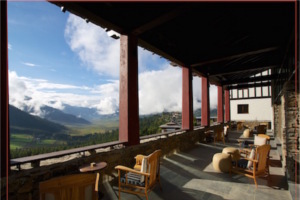
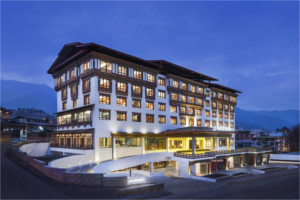
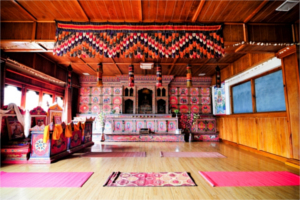
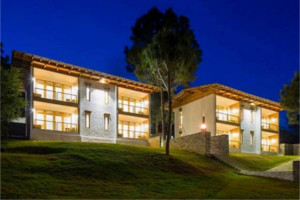
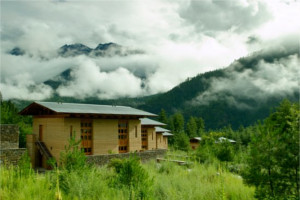
Fly into Paro valley. The fight into Bhutan over the Himalayas is one of the most spectacular experiences. Particularly the flights from Delhi (India) and Kathmandu (Nepal) fly past the majestic Mt.Everest, Kanchenjunga and the entire Himalayan range, visible on the left side of the plane as it glides towards Bhutan. On landing, at Paro, you will be received by our representative. After customs and Immigration formalities, you will be escorted to the hotel. At evening, stroll around Paro market and the valley.
Overnight in Paro.
Early breakfast.
Hike up to Paro Taktsang, the famous Tiger’s Nest. Perched on the cliff side at height of 900m above the Paro valley, the 3hr hike is the most trodden route in Bhutan as every visitor land up visiting the landmark. It is believed that Guru Padmasambhava flew on this site on a Tigresses back and meditated there for months eventually bringing Buddhism to Bhutan.
Drive to Drugyel Dzong.
Drugyel Dzong, the victory fortress located in the northern part of Paro was built in 1649 to honor the victory of Zhabdrung Ngawang Namgyel over invasion from Tibet. But in the 1950s the Dzong was completely destroyed by fire and in 2016 in celebration of the birth of Gyalsey, the Dzong was announced to be built to its former glory. The Dzong site offers imposing view of Mt. Jhomolhari, the second highest unclimbed mountain in the world.
After lunch visit Kyichu Lhakhang, the oldest temple in Paro. Originally built in 7th century by Tibetan Emperor, it’s one of the 108 temples he built in the region. The temple is believed to have spiritual treasures concealed by Guru Padmasambhava and the two orange trees in the courtyard defy the natural way of orange trees usually growing in lower altitude and it’s believed to bear fruit throughout the year.
After breakfast, proceed to Thimphu, the capital of Bhutan. On the way stop at the confluence of the Paro and Thimphu rivers. Visit the Simtokha Dzong, the oldest fortress in the kingdom. You’ll spend the afternoon in Thimphu, visiting the Memorial Chorten and the majestic Tashichodzong. Also visit the Textile Museum and the Folk Heritage Museum, and explore the handicraft shops in middle of the town.
Overnight in Thimphu.
The morning sightseeing in Thimphu, including visits to the National Library, the School of Arts and Crafts, and the National Institute of Traditional Medicine. After lunch, drive to Punakha, the former capital of Bhutan, stop for tea at Dochu La (3,100 meters), where on a clear day you can get spectacular views of the Himalayas.
Visit Punakha Dzong.
Punakha Dzong or Pungthang Dewa Chenpai Phodrang, the palace of bliss was built in 1937 by Zhabdrung Ngawang Namgyel. The second oldest Dzong is religiously and architecturally significant to Bhutanese as it houses several sacred relics, scriptures, statues and is the place where the first king of Bhutan was crowned in 1907. Punakha Dzong is also famous for Punakha Drupchen where the 17th-century battle scene with Tibetan invaders are recreated and is followed by Punakha Tsechu where grand Thongdrel of Guru Rinpoche is unfurled with costumed mask dances and rituals.
At evening, stroll around Punakha Market.
Overnight at Punakha
After breakfast drive to Gantey via Wangduephodrang.
Visit around Wangdue Valley. Visit local village homestay, which offers good insight into the lifestyle of the Bhutanese people. Hike through dense forests of oak trees, rhododendrons and arrive at Gantey village, visit Gantey Goemba, the only Nyingmapa monastery in western Bhutan.
Overnight in Gangtey.
Attend the Black-Necked Crane festival in Phobjikha Valley which is held on 11th November every year, which is the winter habitat for black-necked cranes. Visit the Crane Observation and Education Centre. Activities within the center include early-morning crane observation and information on the cranes–their roosting habits, feeding habits, and their behavior in general. Also visit the nature club and the carpet factory.
Overnight in Gantey.
After breakfast drive to Trongsa, the ancestral home of the royal family. The route is along a spectacular winding road, crossing 3,300m high Pele La with chances of spotting yaks.
Lunch at Trongsa.
Proceed to Bumthang, one of the most beautiful valleys in Bhutan. On the way stop at yathra factory (Textile factory), yathra is a textile originated from Bumthang where patterns and designs are integrated which is very unique to Bumthang. Visit to Jakar Dzong, Udee woodcarving factory, Jambay Lhakhang, and Kurjey Lhakhang.
Bumthang consists of four valleys–Chumey, Choekhar, Tang, and Ura–with altitudes varying from 2,600 to 4,000 meters. It is home to many prominent Buddhist temples and monasteries.
Take an easy hike through the rolling hills to Thangbi Monastery, which was founded in 1470. In the afternoon, visit Tamshing Lhakhang, a treasure house of interesting religious Buddhist paintings.
Overnight in Bumthang.
Begin the day at Bumthang town. 6hr drive to Wangdue Phodrang valley. Visit nearby villages of Wangdue known for slate, stone carvings, and bamboo works.
Overnight in Wangdue Phodrang.
Breakfast.
Drive to Paro via Thimphu. Visit National Museum, Paro Dzong and typical farm house.
Overnight at Paro.
daily tariff:USD 250 Per person per night
surcharges:
Solo Traveller: USD 40 per night
Dual Traveller: USD 30 per person per night
Three travellers and above: surcharges not applicable
Visa fees: One time payment of USD 40 per person.
daily tariff:USD 200 Per person per night
surcharges:
Solo Traveller: USD 40 per night
Dual Traveller: USD 30 per person per night
Three travellers and above: surcharges not applicable
Visa fees: One time payment of USD 40 per person.
A minimum of 3 star accommodation (4 & 5 star may require an additional premium).
All meals
A licensed Bhutanese tour guide for the extent of your stay
All internal transport (excluding internal flights)
Camping equipment and haulage for trekking tours